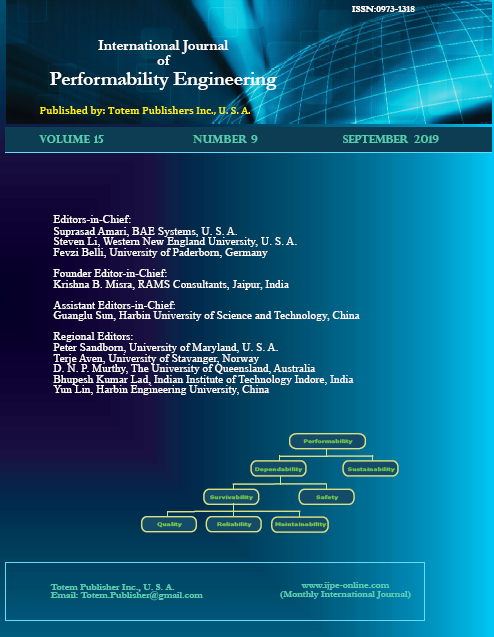-
Analog Detection of PSD Sensor and Sunshine Position Tracking Performance in Four Quadrant Arrays
- Yajie Wang, Xiaoyu Yu, Daniel Wang, Qiaohua Feng, and Yunbo Shi
-
2019, 15(9):
2346-2355.
doi:10.23940/ijpe.19.09.p7.23462355
-
 Abstract
Abstract
 PDF (562KB)
PDF (562KB)

-
References |
Related Articles
In view of the need to convert solar energy into electrical energy for photovoltaic cells, and using solar tracking technology to improve efficiency, a solar position tracking sensor for core components in a solar tracking system is studied. Based on the analysis of the characteristics of photosensors such as photoresistors, photodiodes, and CMOS photosensitive tubes used for position detection, this paper proposes a position sensitive detector (PSD) based on transverse photoelectric effect to realize solar position tracking detection. By analyzing the basic working principle of the PSD sensor and taking the center of the PSD photosensitive surface as the origin, the plane rectangular coordinate system is established parallel to the direction of the photosensitive surface, and the quadrant array PSD sensor model and equivalent circuit are constructed. According to the needs of the sun position detection, the natural environment interference is avoided, and it is guaranteed to be in a stable working environment. The light-shielding cylinder is designed as its packaging structure, and the calculation mode of the azimuth angle α and the elevation angle θ of the incident light spot of the sunlight are given. A solar lighting simulation experimental device is designed and built to perform sensor performance tests. Through testing, when the measurement accuracy is guaranteed around 0.2°, the height of the light-shielding cylinder is 25mm and the aperture is 4mm. By comparing the measured value with the theoretical value, in the measurement range of 90 ± 10°, the correlation coefficient is 0.9999, and the approximate linear relationship between the angle and the displacement is obtained. The maximum error is 0.102°. The polarizer is used as the optical device for adjusting the intensity of light, avoiding the problem that the sensor reaches the upper limit of saturation output due to the sunlight intensity. Finally, the corresponding relationship between the polarizer angle and the output divided voltage of the sensor is given, and the error tends to change with the light intensity.

